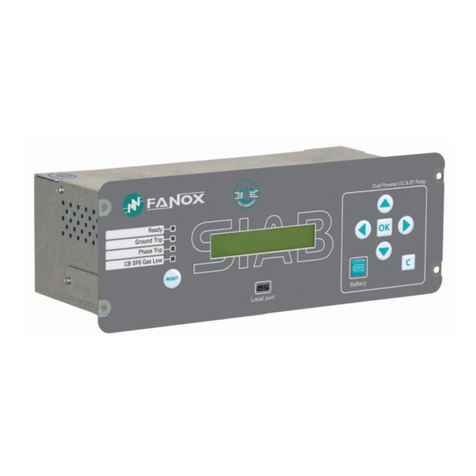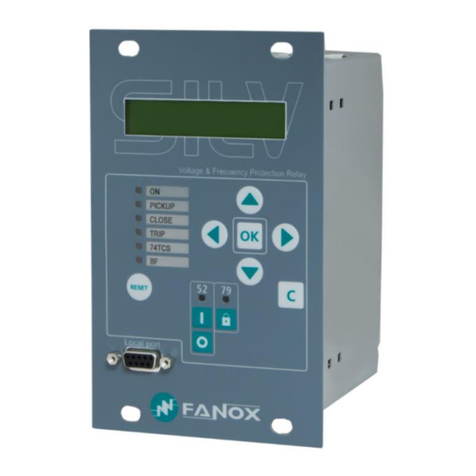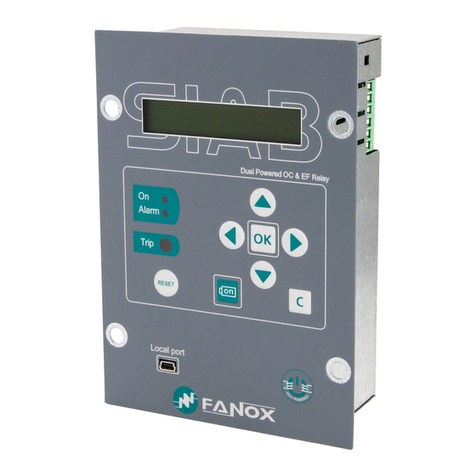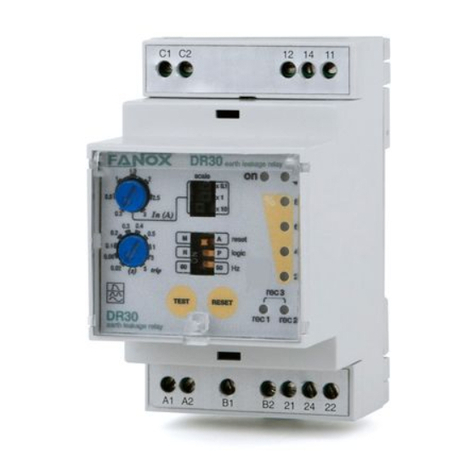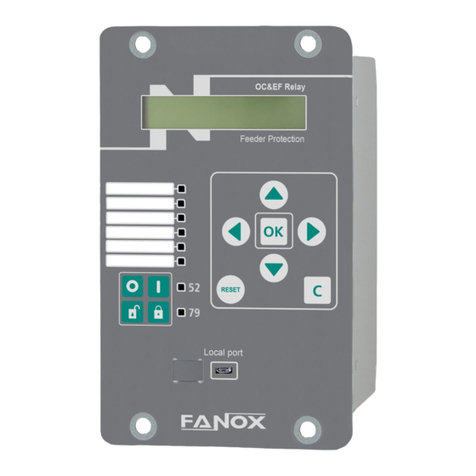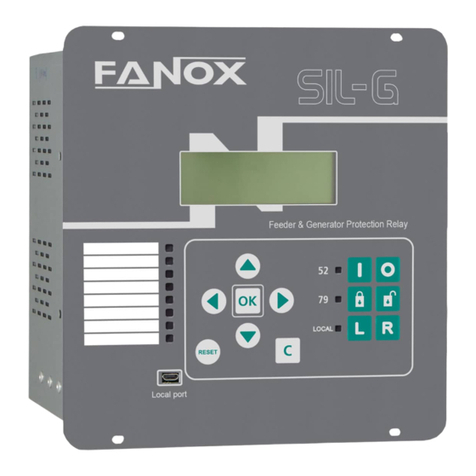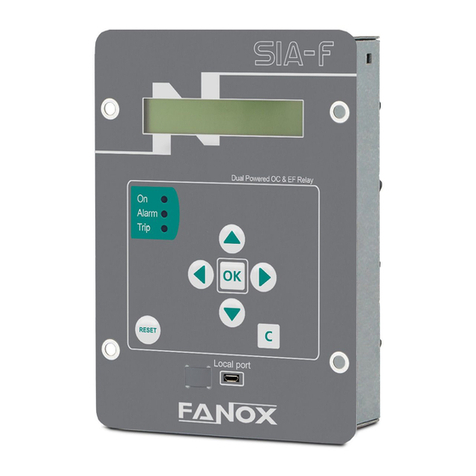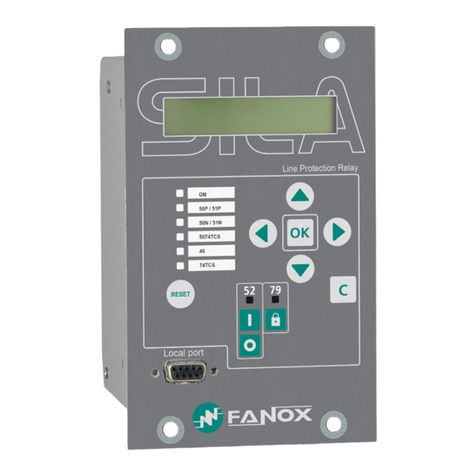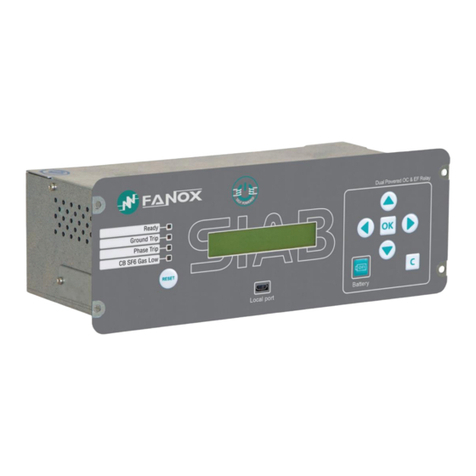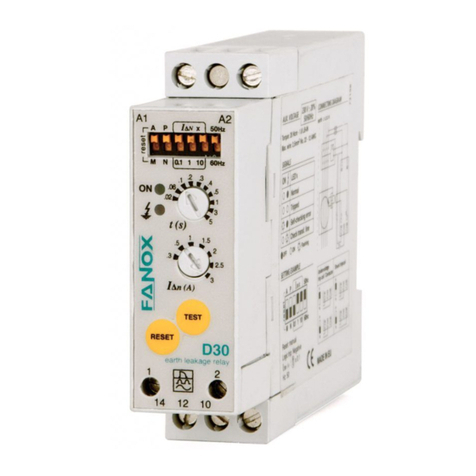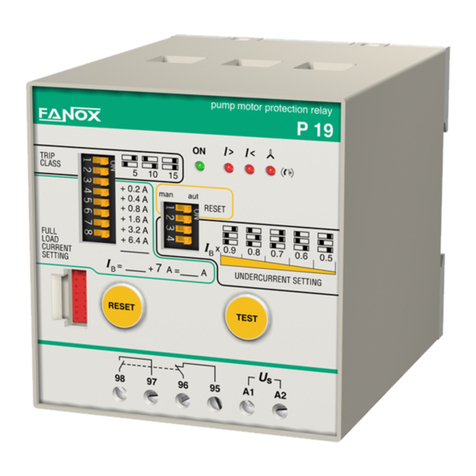ISO 9001:2008
www.fanox.com SIAC116B1011AB_Rev. 05 2 / 32
1....... RECEPTION & INSTALLATION.........................................................................................................3
1.1. Relay unpacking...........................................................................................................................3
1.2. Relay verification..........................................................................................................................3
1.3. Powering the relay up with kitcom..............................................................................................4
1.3.1. Keypad & LCD...........................................................................................................................5
1.3.2. Test menu..................................................................................................................................5
1.4. Relay installation..........................................................................................................................6
1.5. Relay rear part ..............................................................................................................................7
1.6. Connection diagrams...................................................................................................................7
1.6.1. Connection diagram. Three phase CTs and solid neutral..........................................................7
2....... USER INTERFACE.............................................................................................................................8
2.1. Relay front part.............................................................................................................................8
2.2. Bistable magnetic indicator (Flag) ..............................................................................................8
2.3. LED indicators ..............................................................................................................................8
2.4. How to install SICOM Software ...................................................................................................8
2.5. Setting-up the session: Password and access levels...............................................................9
3....... FUNCTIONAL DIAGRAM...................................................................................................................9
4....... TECHNICAL SPECIFICATIONS.......................................................................................................10
4.1. IEC60255-151 Curves .................................................................................................................12
4.2. IEEE Curves ................................................................................................................................13
5....... OPENING MECHANISM...................................................................................................................14
6....... PROGRAMMABLE LOGIC CONTROL............................................................................................15
7....... FLOWCHART ...................................................................................................................................16
7.1. Test menu....................................................................................................................................16
7.2. Direct Access..............................................................................................................................17
7.3. Menus..........................................................................................................................................18
7.3.1. Measurements menu...............................................................................................................18
7.3.2. States menu.............................................................................................................................19
7.3.3. Settings menu..........................................................................................................................19
7.3.4. Events menu............................................................................................................................22
7.3.5. Demand menu.........................................................................................................................23
7.3.6. Fault reports menu...................................................................................................................23
8....... COMMISIONING...............................................................................................................................24
8.1. Thermal resistance.....................................................................................................................24
8.2. Self powering..............................................................................................................................26
8.2.1. Single phase minimum self-powering checking.......................................................................26
8.2.2. Three phase minimum self-powering checking........................................................................26
8.2.3. Verification of Leds/Signalling Outputs/LCD in self-powering conditions.................................26
8.3. Measurements ............................................................................................................................27
8.4. Protection functions...................................................................................................................27
8.4.1. Protection functions testing......................................................................................................27
9....... SIAC116B1011AB REGISTRY.........................................................................................................30
